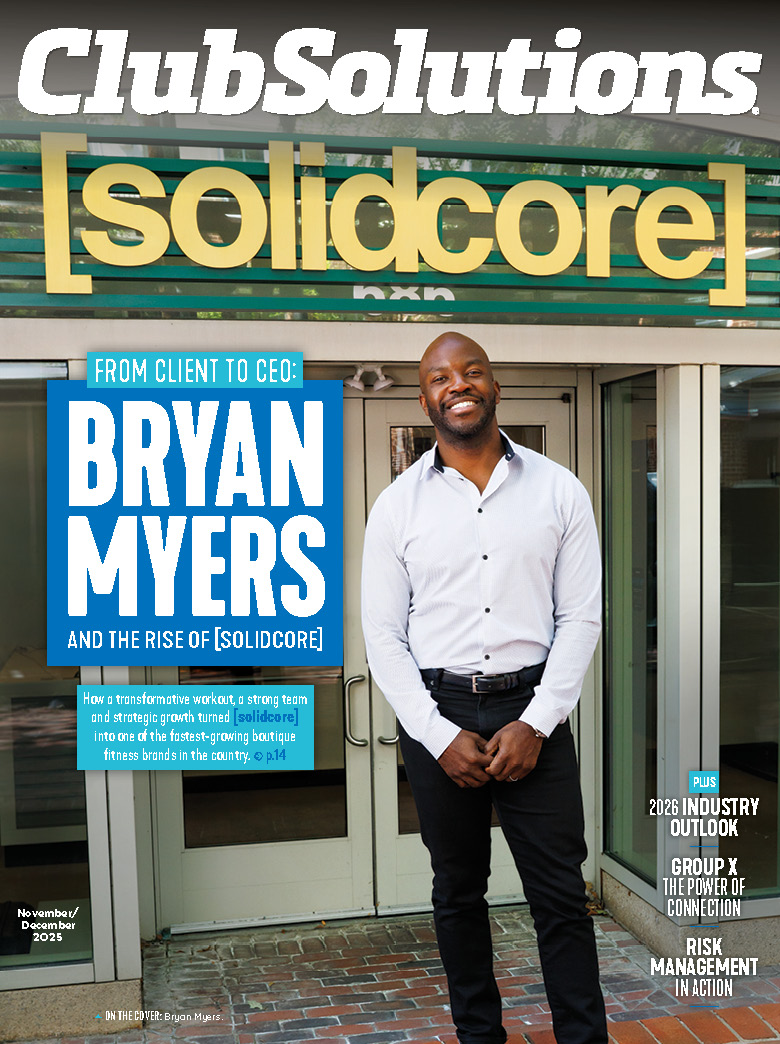Nothing says “Dear member, we don’t care about you” more than when your indoor cycles become an unsightly depository for transmittable infectious diseases comprised of dirt, sweat, and all sorts of human-produced organisms that are ready to latch onto the next unfortunate cyclist. This is clearly not the best staging for prospective members to tour your facility. (And, the aforementioned has a direct effect on your bikes’ performance and long-term cost of ownership.)
With peak season looming ahead, and new members shopping for the best indoor cycling classes in town, now is the time to ensure your bike maintenance is buttoned up. Consider these seven areas as you position your bikes to make an incredible first — and lasting — impression upon new and current members.
1. Cleaning is contagious.
Avoid the biggest mistake you can make — not wiping and cleaning your bikes after every ride. Establish and maintain an end-of-class routine that creates an atmosphere of pride, care and consideration for fellow members.
It starts at the top with group fitness directors (or indoor cycling lead instructors) setting the example for your team of instructors and members alike. Reinvigorate a cleaning protocol that may have slowly died by popping into each class just prior or just after it ends with a towel in each hand and start cleaning bikes. Make sure the members see the smile on your face as you clean. Take the opportunity to engage them in a conversation: “How was the class?” “Any problems with the bikes?” “Are you coming to the fundraiser cycling event this Saturday?” “Hey, can you toss me that rag over there?”
2. Establish Best Practices.
Produce a list of preventative maintenance (PM) ‘Best Practices’ for your indoor cycling room. Be creative and have some fun with it — and post it in the cycling room for everyone to see. As part of their job description, your instructors must take ownership of these practices, and reinforce them with a smile.
Instructor: “Be considerate of the next rider coming in. Wipe your bikes down, just as you’d want someone to do for you. Let’s pay it forward, team!”
3. Instructor Checklist — Every Day, Every Ride.
Your precious equipment investment deserves thoughtful, proactive and consistent attention to eliminate member complaints and maximize your club’s ROI. This requires an all-hands-on-deck approach with your instructors leading the way (even the biggest divas can handle this stuff). An instructor checklist may include some of the following simple tasks:
-Ensure all riders’ knobs, levers and other adjustments are tightened properly before they begin riding.
-All riders should have towels to help absorb some of the sweat that would otherwise fall onto the bike (provide extra towels for those heavy sweaters).
-Immediately report any issues that may arise about the bikes during the class in a detailed bike log (where bikes are listed by corresponding number).
-After class, remind all riders to wipe down their bikes, and raise seat posts and handlebar stems to help the bikes dry out.
4. Ensure your bike maintenance staff is qualified.
Budget to hire a dedicated, experienced and detail-oriented technician who will perform the necessary, weekly, monthly and annual maintenance tasks outlined in the manufacturer’s Service & Maintenance Schedule. This is not an area to cut corners — i.e., trading protein shakes for bike maintenance. Hire someone who takes pride in doing an excellent job and treats your machines as if they are their own.
5. Balance the wear and tear.
Consider where your loyal riders always sit, and which bikes are ridden less, simply due to their positioning in the room. Rotate bikes into different positions on a weekly basis to help equalize the amount of wear and tear. If you hear the old, “Hey, this isn’t my bike”… blame it on a full moon and put on your catchiest tune.
6. Know your maintenance personnel.
Jerry Noyes, a former aviation mechanic who serves as fitness technician at Rochester Athletic Club in Minnesota said, “I know the first names of the members in our cycling program — and we have hundreds of riders. Everyone knows who I am and how to get in touch with me directly. I engage with the instructors and our general manager daily. I stay on top of our bike log, and make a point to pass through the cycling studio right after classes one to two times each day and check in with the instructors. This is how I learn information that helps me do my job even better.”
7. Identify trends.
“One issue isn’t anything to me. Two of the same issues will spark my interest,” said Noyes. For any reoccurring issues, put on your private investigator hat. Are the instructors following best practices and the daily check-list? How is the bike being used? Is there potential misuse occurring by a certain member? Consider all the variables in order to resolve the issue and ensure it doesn’t happen again.
As you enter the New Year, change your mindset from “we fix” to “we maintain” — and you’ll be enjoying your indoor cycle investment for many years to come.
By Jackie Mendes, NASM-CPT, ACE-Group Fitness Instructor & Director, RealRyder International LLC, makers of the RealRyder Indoor Cycle— the first and only multi-planar indoor cycling platform on the market. For more information visit www.realryder.com.
Stay ahead in the fitness industry with exclusive updates!
ACE-Group Fitness Instructor & Director, RealRyder International LLC, makers of the RealRyder Indoor Cycle— the first and only multi-planar indoor cycling platform on the market.











Excellent advice! Don’t forget to keep records on all the work done. Even bogus complaints. The documentation can save you time when researching issues and complaints and provides a defense against negligence.